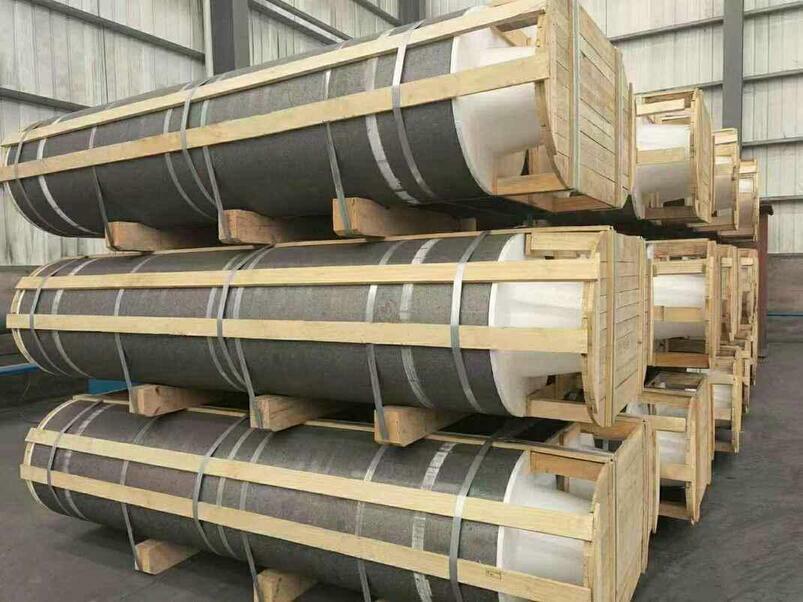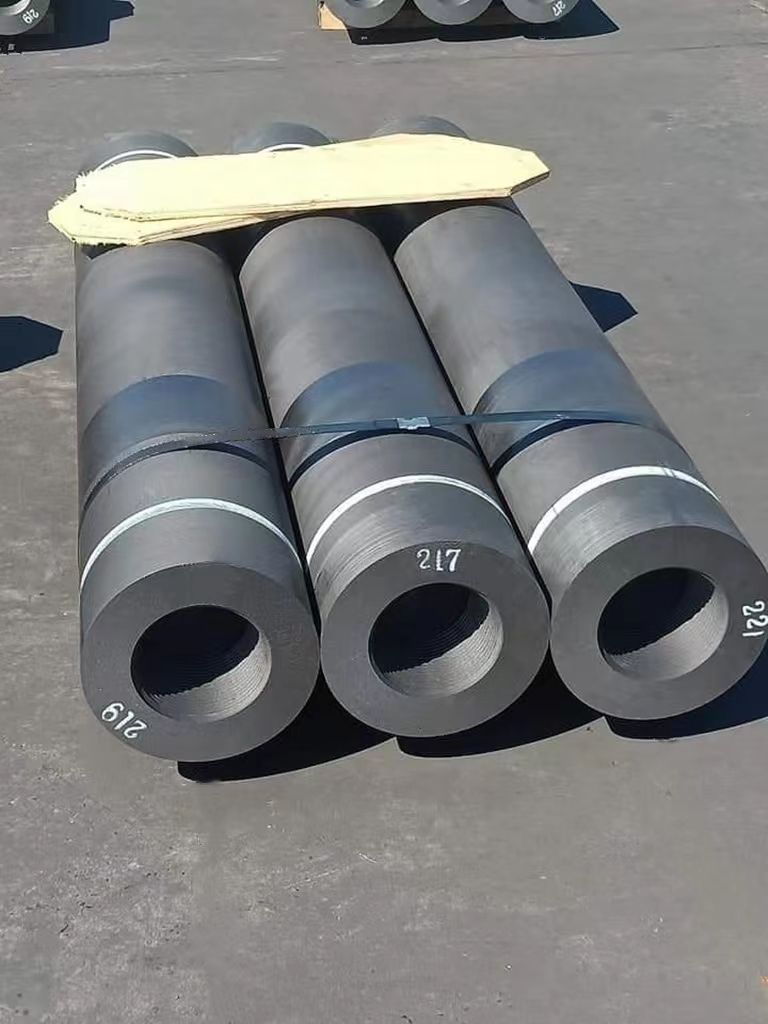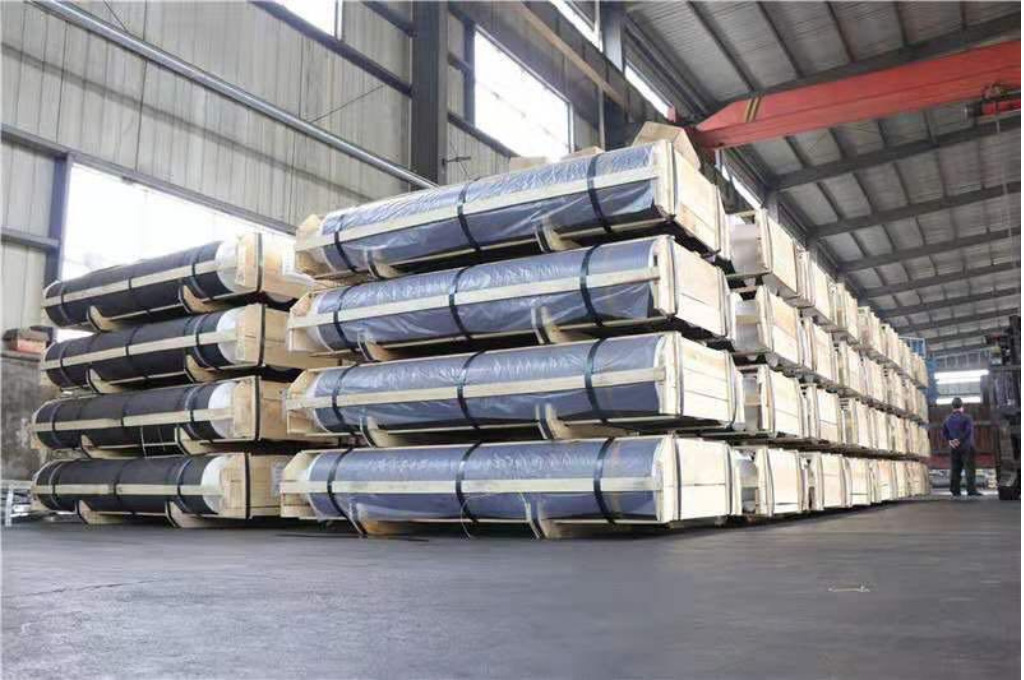O uso de eletrodos de grafite está aumentando devido ao desenvolvimento de aplicações de fabricação de aço em fornos elétricos a arco. Desde o século XX, a demanda por aço especial aumentou muito em setores como o de automóveis, aeronaves, maquinário e eletrólise. Após a década de 1950, a produção de aço em fornos elétricos a arco se desenvolveu em grande escala e com potência ultra-alta, o que melhorou a produtividade, e desenvolveu um método de produção de aço para fundir aço comum a partir de sucata de aço.
Índice
AlternarNos últimos anos, as usinas siderúrgicas começaram a usar sucata de aço para produzir aço comum, promovendo ainda mais a produção de aço em fornos elétricos a arco com o desenvolvimento bem-sucedido do grande forno elétrico CC. Os eletrodos de grafite servem como condutores na produção de aço em fornos elétricos a arco e desempenham um papel de apoio no processo.
Eletrodo de grafite usado para fabricação de aço eaf
Eletrodo de grafite é usado principalmente para a produção de aço eaf. Eles têm uma ampla gama de aplicações no setor devido à sua condutividade elétrica e alta estabilidade térmica e química, como refino de aço, fundição de metais e produção de ligas não ferrosas.
Sua estabilidade em altas temperaturas os torna adequados para vários processos industriais. Esses eletrodos de grafite são usados para criar arcos elétricos em várias aplicações de fusão de metais. Isso inclui a fusão de aço e outros metais, a criação de ligas, a soldagem de peças fundidas e a forja de peças.
Eles podem suportar fortes choques de corrente e não são facilmente oxidados como condutores de corrente. Podem suportar temperaturas extremamente altas de 3.600 graus Celsius. Atualmente, nenhum material pode substituir os eletrodos de grafite no processo de fundição.

Propriedades dos eletrodos de grafite
- Densidade: Em comparação com outros materiais, a densidade dos eletrodos de grafite é maior, entre 1,6-1,78g/cm3.
- Condutividade: A estrutura particular em camadas dos átomos de carbono no grafite favorece o fluxo livre de elétrons, portanto a condutividade é sólida.
- Resistência à flexão: O grafite tem alta resistência mecânica, portanto, a tensão do momento de flexão por unidade de área é relativamente grande.
- Módulo de elasticidade: O módulo de Young aumenta com a temperatura.
- Condutividade térmica: O grafite é um mineral não metálico, e seu método de condução de calor é a vibração térmica dos átomos da estrutura para transferir calor.
- Coeficiente de expansão térmica: É muito mais baixo do que o de outros materiais e é mais adequado para ambientes com altas temperaturas e mudanças significativas.
- Resistência à corrosão: Devido às suas propriedades químicas estáveis, ele não reage com outras substâncias em temperatura ambiente.
Elétricos de grafite UHP
Eletrodo de grafite usado para forno elétrico a arco de corrente contínua
O comprimento do arco por unidade de tensão do Forno a arco elétrico DC é mais significativo do que o do forno a arco elétrico CA, e as condições de operação dos eletrodos de grafite são mais severas.
O setor exige eletrodos com menor resistividade, coeficiente de expansão térmica e maior densidade aparente para essa operação de alta corrente.
Podemos alterar as características ajustando as matérias-primas e os tipos de processo de produção. Você obtém controle sobre essas características, que se adaptam às condições de operação do forno elétrico a arco.
Estudos de casos específicos e exemplos de uso bem-sucedido de eletrodos de grafite:
Indústria siderúrgica: Eles são amplamente usados em fornos elétricos a arco (EAF) para a produção de aço. Eles servem como elementos condutores que criam o arco elétrico para derreter a sucata. Os eletrodos devem resistir a temperaturas extremas e a altas tensões mecânicas. Eles têm excelente resistência térmica e força mecânica e são a escolha preferida para essa aplicação.
Setor de alumínio: Os eletrodos de grafite são usados no processo de fundição da produção de alumínio. Eles são usados na eletrólise do óxido de alumínio (óxido de alumínio) em células eletrolíticas. Eles atuam como cátodo, conduzindo a corrente para separar o alumínio da alumina. A alta condutividade elétrica e a estabilidade química do grafite são adequadas a esse processo.
Setor de silício: Eles podem produzir silício e outros materiais à base de silício. No refino de silício, o quartzo, o coque etc. são usados como matérias-primas para obter silício de alta pureza por meio de reações químicas. Eles são usados em um forno de resistência para fornecer o calor necessário para a reação. Eles têm excelente estabilidade térmica e resistência química.
Indústria de fundição: Os eletrodos de grafite fabricam produtos de ferro fundido e aço em fundições. Nesse processo, eles são usados em fornos elétricos a arco para derreter o metal e atuar como condutores ao iniciar o processo de fundição. O alto ponto de fusão e a condutividade térmica do grafite facilitam a transferência eficiente de calor e podem melhorar a qualidade das peças fundidas.
Indústria química: Eles são usados em vários processos químicos que exigem altas temperaturas e condutividade elétrica. Por exemplo, eles são usados em eletrolisadores para produzir gás cloro e soda cáustica a partir de soluções de salmoura. Também são usados para criar determinados produtos químicos, como o fluoreto de grafite, por meio de reações eletroquímicas.
Mudanças na demanda por eletrodos de grafite
Mais de 95% de eletrodos de grafite artificial são usados para eletrodos de fornos elétricos a arco produção de aço. Portanto, a qualidade dos eletrodos é diretamente proporcional ao resultado da produção de aço em fornos elétricos a arco. Beneficie-se de eletrodos de alta qualidade com coque agulha.
No que diz respeito ao mundo, com o aumento da produção de aço em fornos elétricos a arco e a diminuição do consumo de unidades de eletrodos, a demanda por eletrodos de grafite artificial pode permanecer inalterada ou aumentar ligeiramente.
No futuro
Demanda e crescimento: O setor siderúrgico é o principal responsável pela necessidade de eletrodos de grafite, que provavelmente permanecerá forte com o crescimento da produção global de aço. Além disso, os setores emergentes, como o de veículos elétricos e o de energia renovável, provavelmente impulsionarão ainda mais a demanda por eles, especialmente para aplicações como a produção de baterias de íon-lítio.
Sustentabilidade e preocupações ambientais: Com a crescente ênfase na sustentabilidade e na redução das emissões de carbono, as indústrias estão explorando processos e materiais alternativos. Embora os eletrodos de grafite contribuam para processos com eficiência energética e ecologicamente corretos, como os fornos elétricos a arco, há pesquisas em andamento para desenvolver alternativas mais sustentáveis e ecologicamente corretas.
Avanços tecnológicos: O desenvolvimento de novas tecnologias e materiais pode afetar o futuro dos eletrodos de grafite. Por exemplo, os avanços na nanotecnologia e nos materiais à base de carbono podem levar a novos materiais para eletrodos com desempenho e propriedades aprimorados.
Mudanças nos processos industriais: A evolução dos processos industriais, como a adoção de novas tecnologias de fundição ou métodos alternativos de fabricação, pode influenciar a demanda por eles. É essencial monitorar as tendências e inovações do setor para avaliar suas perspectivas.
Em conclusão
Embora o eletrodo de grafite desempenhe um papel importante em vários setores e aplicações, a previsão de seu futuro requer a consideração de vários fatores. O crescimento dos setores que dependem do eletrodo de grafite, os avanços na ciência dos materiais, as preocupações com a sustentabilidade e as tecnologias emergentes moldarão o cenário futuro. O monitoramento das tendências do setor e dos avanços tecnológicos é fundamental para determinar suas perspectivas de longo prazo.



